For those of you who follow kings, queens, and nobility, it can be quite a chore trying to figure out the genealogy of each family and then tracking how the marriages and children forge political links between countries. One example would be Britain and Russia. King George V (1865−1936) and Tsar Nicholas II (1868−1918) were first cousins and looking at the image of the two standing side-by-side, you would swear they were twins. Empress Maria Theresa (1717−1780) decided to end hostilities with France and so she offered up her ninth child (Marie Antoinette) in marriage to the French dauphin, the future King Louis XVI. (That decision didn’t end well for her daughter, did it?) Tracking British and French monarchies is relatively easy compared to the royal families of the Scandinavian countries and Germany.
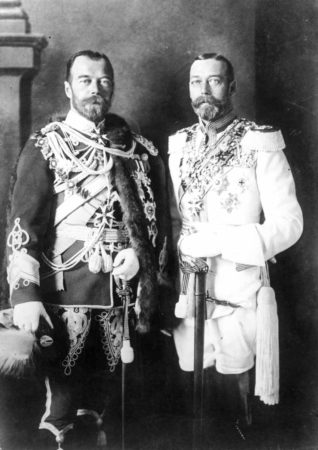
As Hitler began his conquest of Europe in May 1940, it was clear to most that his armies would be successful, occupation was inevitable, and Germany would soon become the master of Europe. Every country Hitler targeted was confronted with the dilemma of determining whether its government should stay or leave in exile. France chose to create a new government, Vichy, and collaborate with the Germans. For Queen Wilhelmina of the Netherlands, there was no choice in her mind. She immediately relocated her government to England and fought Hitler from abroad (click here to read the blog, Audrey Hepburn & Queen Wilhelmina). Belgium’s King Leopold III (1901−1983) stayed and tried to maintain neutrality but was captured and held in Germany until his liberation. (The Belgian government refused to stay and moved to England.) Norway was not able to maintain its neutrality and King Haakon VII (1872−1957) and his government escaped to London leaving the country to the infamous collaborator and traitor, Vidkun Quisling (1887−1945). Finland’s royal family fled to England and the country came under the thumb of the Soviet Union and then Germany. (Click here to read Valkoinen Kuolema and here to read Two Footballers and a War.)
REVOLUTIONARY PARIS – Volume One & Volume Two
These books are about Paris. They are about the places, buildings, sites, people, and streets that were important parts of the French Revolution. You are about to enter a journey into history beginning in 1789 at the village of Versailles with the procession of the Estates-General and ending on the Place de la Révolution with the execution of Maximilien Robespierre on 28 July 1794. This is your personal walking tour of the French Revolution as it occurred in Paris and Versailles.
Did You Know?
Did you know Paris is commonly referred to as the “City of Light”? Frequently, book authors, bloggers, and journalists make the mistake of referring to Paris as the “City of Lights” referencing what they think is the city’s role in establishing streetlights. There really is no excuse for authors and journalists to get this wrong. (I would add editors but there really is very little editing done any longer especially in periodicals and newspapers ⏤ have you noticed that?)
So, why the confusion? Although Paris was one of the first metropolitan cities in Europe to put in streetlights (i.e., gas lamps), the city was nicknamed la Ville de lumière, or “City of Light” in recognition of Paris being the hub of the “Age of Enlightenment” (a.k.a. “Age of Reason”). This was a European intellectual and philosophical movement in the 17th- and 18th-centuries with its ideas centered around the value of human happiness, pursuit of knowledge, and aspirations of fraternity, toleration, and the separation of church and state. Notable philosophers and scientists of this age included Francis Bacon, René Descartes, Adam Smith, Rousseau, and Voltaire.
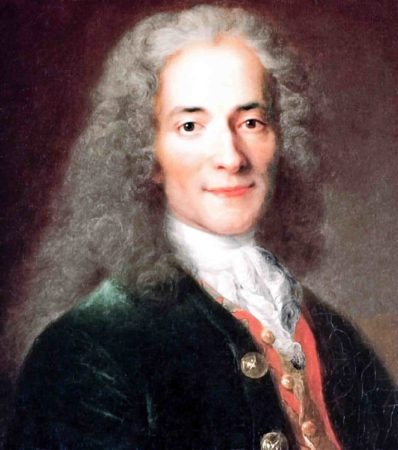
The Age of Enlightenment and its ideas of liberty and religious tolerance undermined the French absolute monarchy and contributed to the unrest leading to the French Revolution. I guess the French citizens in 1789 finally “saw the light” and did something about it. (Click here to read the blog, A City of Light.)
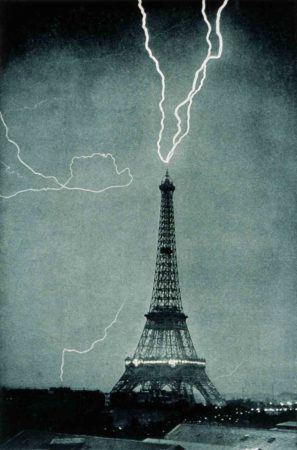
Denmark had been ruled by a constitutional monarchy since 1849. After its defeat by Prussia and the Austrian Empire in 1864 in the Second Schleswig War, Denmark was forced to cede the Schleswig and Holstein territories to Prussia. This followed a string of defeats and territorial losses over a period of 250 years. This latest loss prompted the country to follow a policy of neutrality in the future.
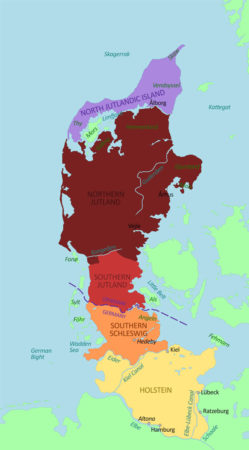
Despite its neutral position in World War I, Denmark was offered the opportunity by the Versailles Treaty to get back Schleswig and Holstein. Fearful of Germany’s intent to expand its borders, Denmark chose to only recover Northern Schleswig. In 1939, Denmark signed a 10-year non-aggression pact with Hitler. In less than a year, Hitler reneged (surprise, surprise) when Germany invaded Denmark and the Danes quickly surrendered. The king of Denmark, Christian X (1870−1947) decided to stay in the country to maintain some semblance that the monarchy remained in control. (He rode his horse around town each day to stay visible with his subjects.) While the first several years were marked by Danish cooperation with Germany, the king grew disillusioned and began to oppose the Nazis by rejecting their demand for anti-Jewish legislation and condemning the occupation forces when fighting broke out between Germans and the Danish resistance.
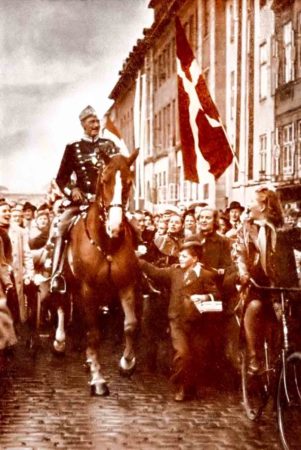
Once, the king became extremely upset when he saw the Nazi flag flying over the palace. He demanded the flag be taken down. The German officer in charge refused to take down the flag and Christian X indicated he would have a Danish soldier remove the flag. He was informed the soldier would be shot. The Danish king told the officer that he would be that soldier. The flag came down.
Despite these acts of defiance, it was Christian X’s short and curt response to Hitler’s lengthy letter congratulating the king on his seventy-seventh birthday that upset the Führer. That was the point when Hitler had had enough of the Danish king and Christian X was imprisoned until his liberation in May 1945.
Prince Harald of Denmark
King Frederik VIII of Denmark (1843−1912) had eight children of which four were boys. The eldest son became King Christian X upon his father’s death. (Christian X is the great-grandfather to King Frederick X, Denmark’s new monarch.) The fourth child and third son was Prince Harald of Denmark (1876−1949) ⏤ Frederik VIII’s second son, Prince Carl (1872−1957), became King Haakon VII of Norway. Today, the monarchs of Norway, Sweden, and Denmark (as well as other countries) are linked in some way or another to common ancestors.
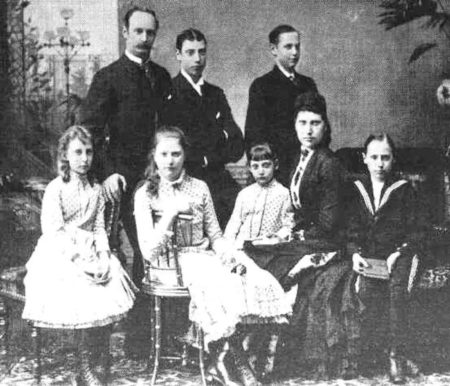
Prince Harald entered the military as a teenager and served almost his entire life while retiring as a general. In 1909, Prince Harald married his second cousin at Glücksburg Castle in Schleswig-Holstein. Princess Helena of Schleswig-Holstein-Sonderburg-Glücksburg (1888−1962) was related to Empress Augusta Victoria (the last empress of Germany), Queen Victoria of Great Britain, and the German emperor, Wilhelm II. Her father was the nephew of King Christian IX of Denmark. It’s all quite complicated and I’m not about to bore you with the lineages.
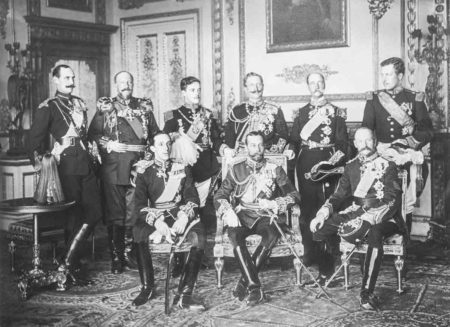
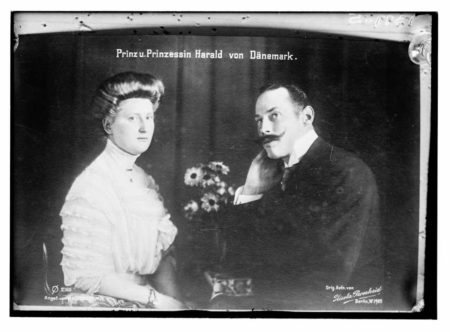
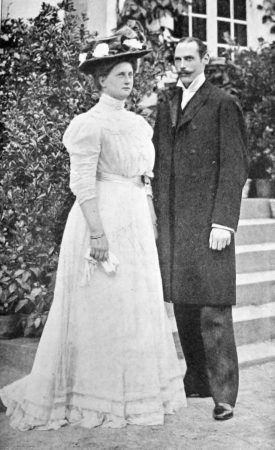
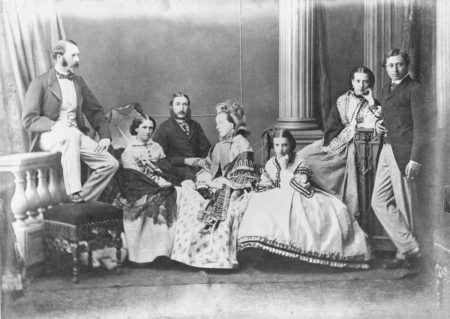
Between 1910 and 1923, Prince Harald and Princess Helena had five children and raised them at their county estate, Jægersborghus, located north of Copenhagen. Princess Helena’s activities were limited by royal protocol to representing the family and participation in charities. In 1923, she founded an orphanage called Spædbørnshjemmet Danmark, or sometimes referred to as “Princess Helena’s Orphanage.” While the original building was demolished, the orphanage exists today under the patronage of the royal family. Unfortunately, Princess Helena is not known for her charity work. She earned her reputation as a traitor during the World War II German occupation of her adopted country.
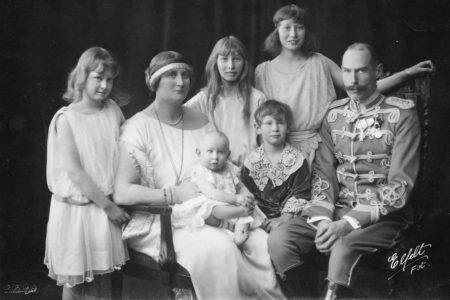
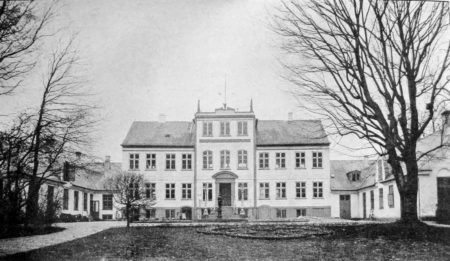
Princess Helena of Denmark
Helena was a princess of Denmark through her marriage to Harald. She was born at Glücksburg Castle in Prussia and had strong family ties to the German aristocracy. So, it seems natural that after the Germans invaded Denmark and began their occupation, Princess Helena’s sympathies were with the Nazis. The stigma associated with her actions during the four years of occupation stuck to the princess until her death.

After the war, the Danish resistance went on record that Princess Helena was the only member of the Danish royal family to have betrayed Denmark. She held dinner parties for high-ranking German officers as well as attending functions hosted by the Germans. Her favorite senior officer and dinner partner was Gen. Günther Pancke (1899−1973), the Höherer SS- und Polizeiführer, or “Higher SS and Police Leader” of Denmark (i.e., head of the Gestapo). Once, she was with a group of friends when Luftwaffe fighter planes appeared in the sky and she said, “Aren’t our planes wonderful?” A Danish officer remarked, “Madame, please remember that you are a Danish princess.” She laughed and he left the table. Throughout the occupation, Princess Helena could never understand the king’s policy of passive non-cooperation while purposely gaining introductions to Danish collaborators.
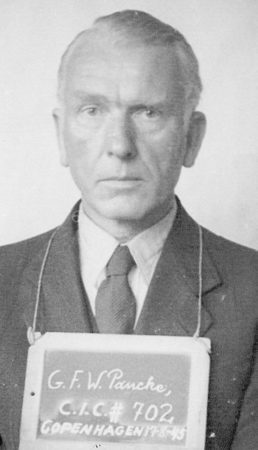
In January 1942, Princess Helena attended the memorial service for a Schutzstaffel (SS) officer. Although invited, King Christian X refused to show up. She even went so far as to try and persuade her husband and Prince Knud (son of Christian X) to allow Nazi representation in the Danish government. One of Princess Helena’s personal servants was an informant for the local German Abwehr (military intelligence) and after the war he was tried as a spy and found guilty.
Banishment
While Princess Helena was never considered to be an actual German agent, she certainly was a collaborator and at worse, an informer. Needless to say, the proud and patriotic Danes did not like her. (That’s probably an understatement.) On one occasion, Danish citizens stoned her limousine while on her way to meet with Gen. Pancke. Her husband and two sons refused to dine with her, and the two boys refused to speak to her. (Rumors of a divorce circulated around the royal court but the Nazis refused to allow it.) Prince Oluf (1923−1990), the couple’s youngest son and future Count of Rosenborg, called her, “that crazy crone.” His mother was astonished when she learned Prince Oluf had joined the Danish resistance. At the family’s first dinner after liberation and the return of their eldest son, Prince Gorm (1919−1991) from exile in London, a bottle of brandy was served for toasts. Prince Gorm noticed the bottle had been opened and asked who opened it. His brother whispered, “Gen. Pancke.” Prince Gorm picked up the bottle and hurled it into the fireplace before leaving the room. His mother’s response as he left was, “But, dear, the Nazis weren’t really so bad!”
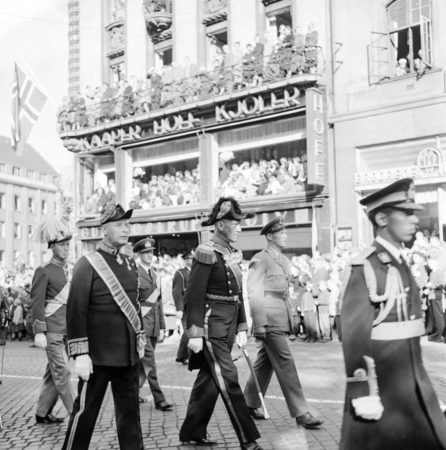
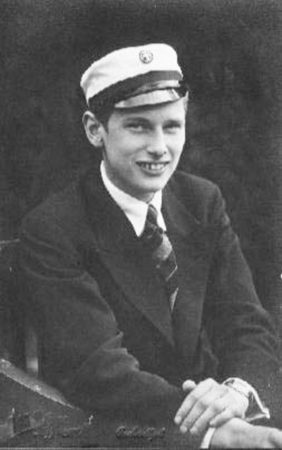
Although considered a “de facto traitor,” Princess Helena could not be brought to trial because she was a member of the royal family, and if found guilty, the punishment would have to be decided by the king. However, King Christian X did punish his sister-in-law. She was banned from Denmark on 30 May 1945, exiled to Glücksburg Castle in Germany, and placed under house arrest. It didn’t take a trial to establish her guilt. Princess Helena was escorted to the airport that day by Prince Knud who was heard to say, “Thank God she’s gone.”
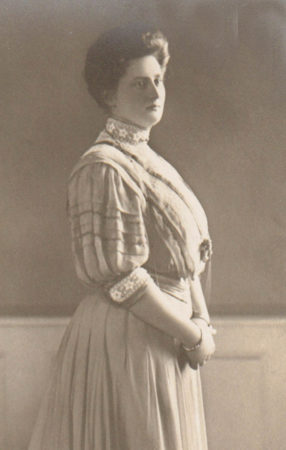
The princess was allowed to return several times when her husband became seriously ill. Each time her stay was very short. Her final visit lasted two years until Prince Harald passed away on 30 March 1949. Shortly afterward, Princess Helena was shuttled back to Germany where she would remain until allowed to return permanently.
Princess Helena died on 30 June 1962 in Hellerup, Denmark. As a Danish princess, she was allowed to be buried at Roskilde Cathedral on the island of Zealand, the traditional burial site for Danish royals. Her remains lie in the Glücksburg Chapel (a.k.a. the “Christian IX Chapel”) along with Prince Harald and other deceased family members.

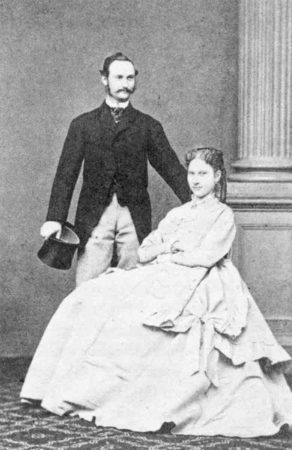

In closing, King Christian X’s wife was Alexandrine of Mecklenburg-Schwerin. She was German but her intense loyalty to Denmark was summed up by a Danish playwright who said of her, “Protect our Queen, the only German we would like to keep.” Alexandrine died in 1972 and is buried in the Glücksburg Chapel near her not-so-loyal sister-in-law.
Next Blog: “The Harriman Committee”
Correspondence and Commentary Policy
We welcome everyone to contact us either directly or through the individual blogs. Sandy and I review every piece of correspondence before it is approved to be published on the blog site. Our policy is to accept and publish comments that do not project hate, political, religious stances, or an attempt to solicit business (yeah, believe it or not, we do get that kind of stuff). Like many bloggers, we receive quite a bit of what is considered “Spam.” Those e-mails are immediately rejected without discussion.
Our blogs are written to inform our readers about history. We want to ensure discussions are kept within the boundary of historical facts and context without personal bias or prejudice.
We average about one e-mail every two days from our readers. We appreciate all communication because in many cases, it has led to friendships around the world.
★ Read and Learn More About Today’s Topic ★
Binger, Charles. The Hated Princess. The Esoteric Curiosa, 1949. Click here to read.
Brooks, Taylor. The Danish Dynasty: A History of the House of Glücksburg. Self-published, 2024.
Delaney, Evie. Who was Princess Helena of Denmark? Tatler, 18 January 2024. Click here to read.
Flantzer, Susan. Danish Royal Burial Sites: House of Schleswig-Holstein-Sonderberg-Glücksburg, 1863-present. Unofficial Royalty (c. 2012). Click here to visit the web-site.
Hourly History. The Age of Enlightenment: A History from Beginning to End. CreateSpace Independent Publishing Platform, 2017.
Lerche, Anna. A Royal Family: The Story of Christian IX and his European Descendants. Oslo: H. Aschehough & Co., 2003.
Van der Kiste, John. Northern Crowns: The Kings of Modern Scandinavia. Stroud, U.K.: Sutton Publishing Ltd., 1996.
Disclaimer:
There may be a chance that after we publish this particular blog, the video links associated with the blog are no longer accessible. We have no control over this. Many times, whoever posts the video has done so without the consent of the video’s owner. In some cases, it is likely that the content is deemed unsuitable by YouTube. We apologize if you have tried to access the link and you don’t get the expected results. Same goes for internet links.
What’s New With Sandy and Stew?
Sandy and I (okay, it’s primarily Sandy) are working our way through our forty-seven years’ worth of photographs. It’s thousands of photographs we have to determine what is worth saving, how to catalogue them, and then find the space to keep them. This is in addition to the photographs we have inherited from my father and the boxes of photos Sandy’s parents have given us over the years. It is quite a daunting task! This doesn’t count the hundreds of photos we have of our grandparents, great-grandparents and beyond. I think we found the photo of Sandy’s distant relative who would qualify her for membership in the Daughters of the American Revolution (no cause for concern ⏤ we’re not really “club people.”) Trying to figure out who-is-who is an almost impossible situation, especially when your father is ninety-five and has no memory left. But don’t worry, we’ll get through it. Just let me know if you’d like a beautiful photo of the Grand Canyon.
Thank you to all of you who subscribe to our bi-weekly blogs. It seems there isn’t a day that goes by where we don’t increase our readership. Please let your history buff friends and family members know about our blog site and blogs.
Someone Is Commenting On Our Blogs
Thanks to Leanne A. for contacting us regarding Pearl Witherington (refer to blog, What I Did Wasn’t Civil). Leanne is writing a book on World War II female spies and needs images of Pearl. Unfortunately, I couldn’t be of much help. I couldn’t find any images either in the public domain or in any of the image repositories I use for my books. I have a feeling the files on Pearl are still classified by the British and perhaps that may be a reason for the dearth of image availability. I suggested to Leanne that she try and contact Pearl’s family.
Also, a thank you to Linda W. for her e-mail wanting to know if Lucie (“Pilette”) Spaak Bennani was still alive (refer to blog, Something Must Be Done). Linda is one of about seven people who have written us since our blog about Suzanne Spaak was published. I do not know if Lucie is still alive. Her brother, Bazou, passed away in the past year or so. Both children assisted their mother in the French Resistance during the occupation. I suggested she contact Anne Nelson, author of Suzanne’s Children.
If there is a topic you’d like to see a blog written about, please don’t hesitate to contact me. I love hearing from you so keep those comments coming.
Shepherd.com is like wandering the aisles of your favorite bookstore.
Do you enjoy reading? Do you have a hard time finding the right book in the genre you enjoy? Well, Ben at Shepherd.com has come up with an amazing way to find that book.
Shepherd highlights an author (like me) and one of their books. The author is required to review five books in the same genre. So, if a reader is interested say in cooking, they can drill down and find specific books about cooking that have been reviewed by authors in that category. Very simple.
If you like to read, I highly recommend you visit Shepherd.com. If you do, please let me know what you think and I will forward Ben any suggestions or comments you might have.
Click here to visit Shepherd’s website.
Click the books to visit Stew’s bookshelf.
Check out Stew’s new bookshelf on the French Revolution.
Share This:
Follow Stew:
Find Stew’s books on Amazon and Apple Books.
Please contact Stew directly for purchase of books, Kindle available on Amazon. Stew.ross@Yooperpublications.com or Contact Stew on the Home Page.
Please note that we do not and will not take compensation from individuals or companies mentioned or promoted in the blogs.
 Walks Through History
Walks Through History
Copyright © 2024 Stew Ross

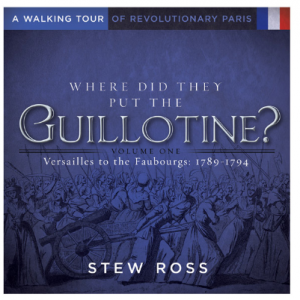
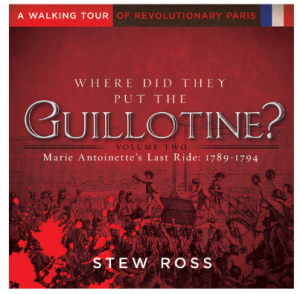








Stew, every time I read one of your articles I am in awe of your research and scholarship.
Carl Schwarz
Hi Carl, thanks very much for your kind comment. Always good to hear from you. STEW
Another excellent report. Hitler, Putin and Tucker Carlson must also be related in some sort of convoluted way.
Hi Greg, thanks for reading the blog and your kind comment. STEW